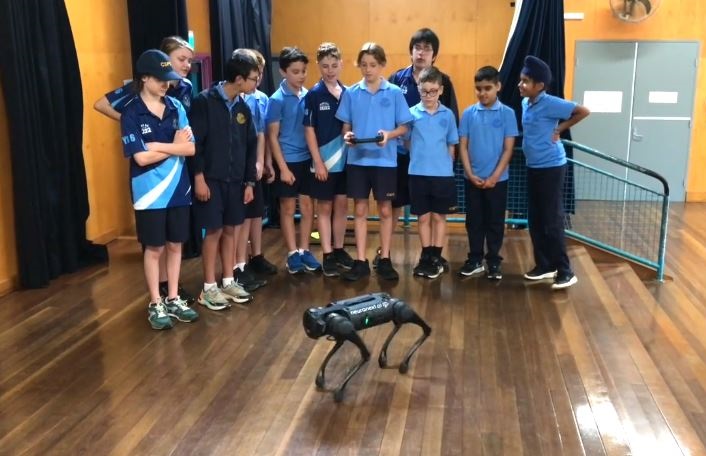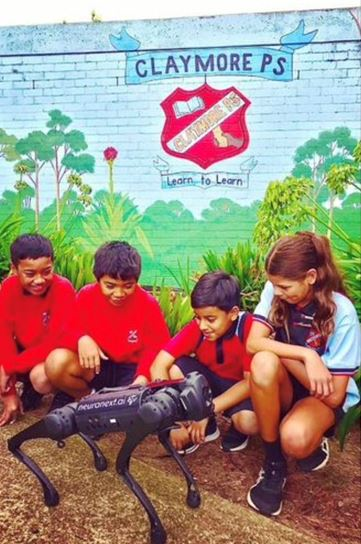
As the Artificial Intelligence (AI) revolution gets into full swing, schools are perhaps some of the most important testing grounds for how this technology will impact on our lives.
In recent months there have been heightened concerns about the implications of sophisticated AI chatbots like ChatGPT for students’ learning – particularly with regard to critical thinking and academic integrity.
However, one South-West Sydney public school is making sure that AI enhances rather than diminishes its students’ ability to think critically and creatively.
On February 22, Claymore Public School in Campbeltown launched the AI in Schools program with the aim of empowering its students with much-needed understanding about the science and practical applications of AI-powered digital tools.
Helping students demystify AI
Developed in collaboration with Sydney-based company Neuranext and taught by experienced educators with strong backgrounds in both technology and education, AI in Schools covers a wide range of critical topics including computer vision, natural language processing, AI powered cutting edge robotics, and generative AI such as Stable Diffusion and Large Language Models.
“Students have been hearing about AI for some time and this program demystified AI as it relates to their lives, but many did not know that they were already using AI every day and Neuranext's incursion was able to show how much AI is already integrated,” Steven Hooke, Claymore Public School principal, told The Educator.
“Neuranext brought an AI powered robotic dog which was a very engaging use of AI for students as they were able to brainstorm use cases for the technology, this followed on from an activity where students had to do a task the ‘old’ way.”
Hooke said his students were asked to drive a remote-control car safely in the lanes of a large driving track where it took a lot of concentration to complete.
“Computer Vision self-driving cars automated the driving task, and many students were discussing the implications of this technology in jobs,” he said.
“When students saw what generative AI can do for imagery with deep fakes etc great discussions about cyber security were forthcoming.”
Hooke said getting students thinking about use cases and how the technology will change the future, as well as the computational thinking and Digital Technology syllabus links were some of the most promising outcomes from the program.
When asked what role he sees AI playing in improving teaching and learning outcomes in schools moving forward in 2023, Hooke said the rapid pace of change presents students with some important challenges and opportunities.
“Schools need to keep up to date with the latest developments and ensure that they are utilising AI where appropriate to enhance student learning, particularly as a potential scaffold to student learning with ChatGPT as one example,” he said.
“AI can bring students ideas to life with generative imagery for example where currently students can feel limited by perceived artistic challenges etc. Schools could potentially utilise some of these latest AI technologies to empower students to create high quality work as a tool, not a replacement for learning.”
Bridging a critical gap
Neuranext Education director, Adrian Tyson, has inspired over 4,200 students since March 2019 with AI science and technology school incursions, after school, vacation care and holiday programs.
Tyson said the reason he created the Neuranext AI in Schools program was to address the gap between this rapidly accelerating technology and what Australian students could learn about it beyond often sensational media reporting.
“As an experienced teacher, I initially teamed up with a PhD in Psychometric Statistics who taught AI to Doctoral students internationally and from that I took what are often abstract or deeply mathematical concepts and created AI in Schools,” Tyson told The Educator.
“I wanted to bring interactive live implementations of AI into the classroom so that students can not only learn about how computer vision works but apply it to the self-driving car problem and object detection.”
Tyson said his aim is to spark students’ interest in AI so that they can become more engaged in STEM as a subject and take advantage of the career opportunities that AI will generate in the near future.
“While we focus on computer vision and how it works with live implementations, the second part of our sessions looks at what AI can do across generative AI,” he said.
“ChatGPT is now somewhat well known among students, and it represents one of those watershed moments that many education systems are still grappling with.”
Tyson said one of the most powerful benefits of AI relates to the possibilities of reducing teacher workload.
“There are some fantastic examples of lesson planning and exam generation out there already. Measurement of academic achievement will have to be altered,” he said.
“This program, by lifting student and teacher understanding of AI and its capabilities, empowers schools to successfully navigate the rapidly changing environment more confidently.”



